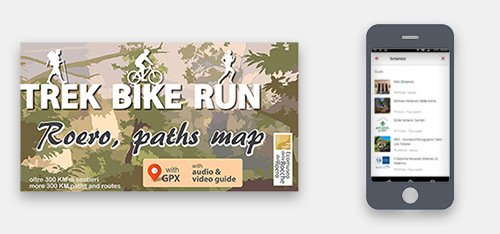Vezza d'Alba
Vezza d’Alba is a town of ancient origins located in the central Roero area, and the Rock where once stood the Castle is now one of the panoramic steps of the Langhe and Roero’s Strada Romantica. Surrounded by woods and vineyards, Vezza d’Alba is the Natural Museum’s headquarter in the Roero territory and it’s a strategic crossroad of the Paths, one of which is dedicated to the truffle and the precious hypogeal mushroom’s hunters world, to which the town decided to dedicate the November Fair.
BACKGROUND HISTORY
The territory’s place-names reveal pre-Ligurian and pre Indo-European settlements. The most ancient quote of the name (Vicia) appears in a donation from the 901 a. C., at the hands of the emperor Lodovico all Chiesa d’Asti. The name comes from an herbaceous species (the Vicia sativa) that has grown as forage in the Roero area in the past, where it left other place-names.
The roman presence left traces in the road system and in a fundus Rubiano, today called Rubiagno. The first unit of the castle is linked to the Longobardic period and it’s been looted and destroyed soon after the mid-1300. In 1401 the fief was purchased by Oddone Roero, progenitor of the Vezza and Guarene’s family branch, that remained there for about two centuries: after an interlude with the Savoy as inhabitants, the household was abandoned at the beginning of the 1700, to move in the residence designed by Count Carlo Giacinto Roero and built in Guarene.
MUST SEE:
ROCCA OF THE CASTLE. It’s located on the top of the town at 352 m above sea level and it’s accessible on foot. It is the heart around which the town developed. The tower’s ruin that you can find on the Strada Romantica’s step it’s all that’s left from the ancient castle. Then the earthquake in 1887 destroyed most of it, only the Keep (the “Torrione”) survived, renovated in 1929, but then collapsed.
SAN BERNARDINO’S CHURCH. Also known as the battuti Bianchi’s Fraternity, it is considered the nicest building of Vezza and was built between the 1744 and the 1768. In addiction to this it was designed by Count Carlo Giacinto Roero; the slim bell tower, that contains valuable paintings, was complete in 1792.
MADONNA DEI BOSCHI. It was a sanctuary built in the XII century on an isolated higher ground between the Sanche Valley and the Val Maggiore. Between the 1475 and the beginning of the 1500s the late-Gothic fresco “L’Annunciazione” was added to the sanctuary, work that belonged to an unknown “Maestro di Vezza d’Alba”, now confined in the attic. The church faces the most significant changes in 1731, at the expenses and designed by Count Carlo Giacinto Roero. From 1608 until the end of the 1800s some of the members of the Roero’s family of Vezza and Guarene were buried in the cript.
THE ROERO’S NATURAL MUSEUM . The Roero’s Natural Museum offers the possibility to observe and get to know closely the different Roero’s natural environments, both from a geological and natural point of view. It consists of the geological room that tells about the origin of the Roero’s territory using plastic models and fossils collections, and the room dedicated to the wildlife, where various environments and wildlife specimens are shown, to which an entomological section is added.
ROERO’S TRUFFLE GROUND. The Educational Truffle Ground is located in the Valtesio area, a place where you can discover how the most valuable kind of fruit was born. It is accessible on foot through the Sentiero del Trifolao or by car, parking along the Alba-Canale highway. Not far from the truffle ground there’s an artificial little lake covered in lotus blossoms, that offer an amazing flowering during summer.





